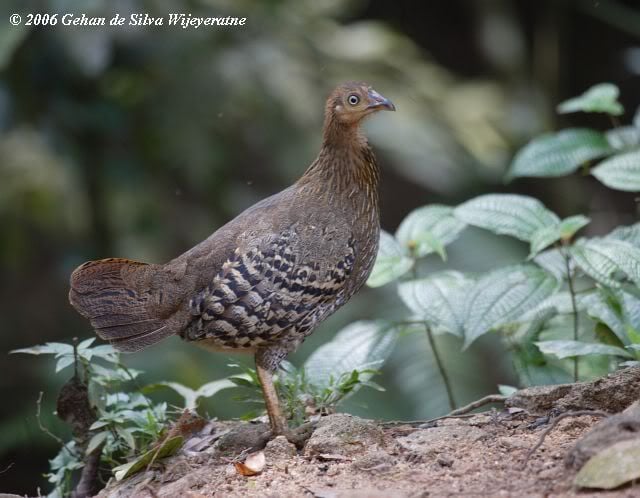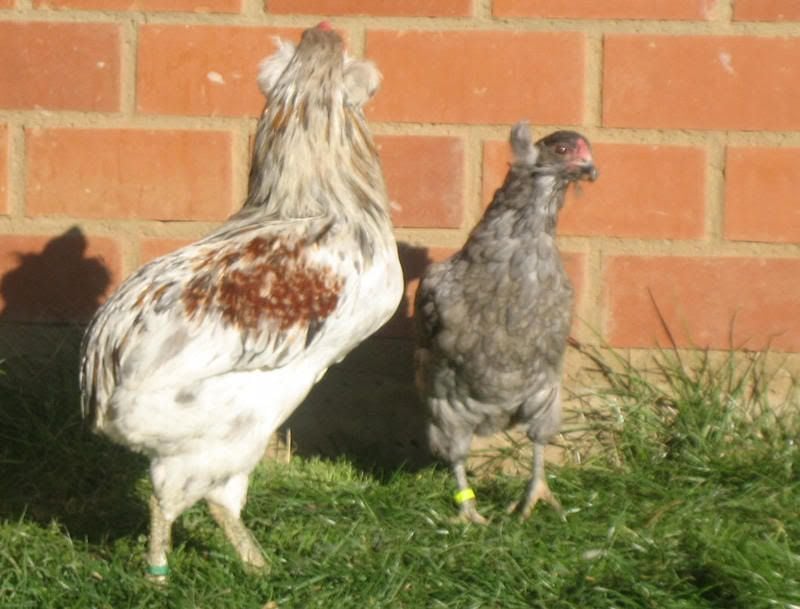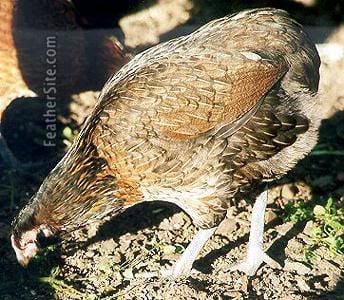- Thread starter
- #11

Lets delve a bit further into the origins of the Desert Isles fowl carried by Yapese speaking Micronesian seafarers to the Quechuan speaking Indians of South America.

Malagasy Ganoi (Austronesian Fowl Gallus giganteus ) courtesy Ultimate Fowl

Austronesian Chief

This is a map of peoples that speak Austronesian languages. Austronesian Culture was a primary foundation of the younger Polynesian Culture. The Austronesians originated in South East Asia but they expanded their culture by boat all the way to Madagascar and the Comoros Islands off the coast of Africa. They brought back plants and animals from Madagascar and the Comoros Islands to Malaysia and onwards. Their two most important domestic animal species were the Vietnamese Pig and the Austronesian Fowl (Giant Gamefowl) Gallus giganteaus .
We're all familiar with the debate about Polynesian contact with South America prior to European arrival.
Firstly, we often hear the term Polynesian without understanding that at least three distinct and equally ancient ethnic cultures provided the foundation of newer younger mixing pot of a culture that is the source of the term.
In other words, the Polynesian people and Polynesian culture are the result of admixture between Melanesian ; Micronesian and Austronesian peoples.

The three most prominent surviving cultures of Oceania and the Pacific. Austronesian culture has been subsumed by Polynesian in the eastern territories but one point in time,Austronesians were the dominant seafaring culture from Madagascar off the coast of Africa all the way to the Eastern Pacific off the coast of South America.
It would appear that the first seafarers to reach many islands in remote Oceania were Melanesians, followed shortly after by Micronesians and eventually, and even more successfully, by successive waves of Austronesian peoples. Each brought their own respective "food baskets" with them and naturalized these plants and animals on the islands that they would call home. Each group would eventually be inundated and or expelled by the next and so the most remote islands became the strong holds of specific ethnic types whereas islands that were more easily reached were melting pots. Irregardless of ethnic inhabitant, the islands were homes to populations of dogs, pigs and junglefowl carried there by seafarers from different regions within Indonesia, Malaysia and Melanesia.
Melanesians by and large did not carry Junglefowl but they did carry unique dogs , pigs, taro and banana.
Micronesians carried Junglefowl of at least two different varieties, one of which (Arjuna Bekisar) being of hybrid origin.

Micronesian Ayam Bekisar ( Green JF by Indonesian Red Jf with no or very little domestic fowl genes)
Austronesians carried at least four different varieties of Junglefowl, three of which ( Austronesian G. giganteus; Wallikikilli Basket Bantam and two different forms of Ketawa) being of hybrid origin.


Wallikikilli Basket Bantams ( Sri Lanka Junglefowl sires in ancestry)
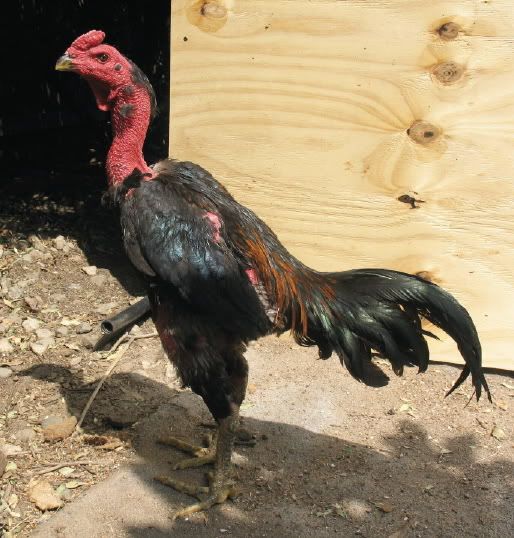



The origins of the Austronesian Game Fowl Gallus giganteaus are a bit of a mystery but it seems that they are likely descended of at least two extinct island forms. The birds probably originated on the Comoros Islands and there may well have been more than one form. Both forms were at least seasonally naked necked. Both exhibited a single gular lappet. One was prominently crested. Both lacked wattles. Having never encountered humans before, these enormous fowl were fearless. The birds were introduced by the Austronesians to Madagascar and Reunion shortly after their discovery. They were subsequently carried by Austronesian seafarers to South East Asia and beyond. The Austronesian Fowl is the ancestor of the Malay, Saipan and other giant game breeds. They are one of the foundations of all domestic utility breeds. Transplanted to desert islands and crossed with Asian junglefowl of more typical dimensions, the Austronesian fowl quickly shrank in in size. All naked necked, frizzled, and crested breeds have Austronesian ancestors at their genetic foundation. We'll discuss the role of the Austronesian fowl in the ancestry of South American breeds in depth in the Mapuche thread. It should suffice to say that our familiar Quechua has a bit of Austronesian fowl in its ancestry and that these genetic founders were established first on the desert isles of the South Pacific and Oceania.
While I've posted a number of photos of males of this archaic type, it was actually females (pictured below) that were amongst the founders of the Yapese Desert Isles stock that were eventually transported to N.W. South America.


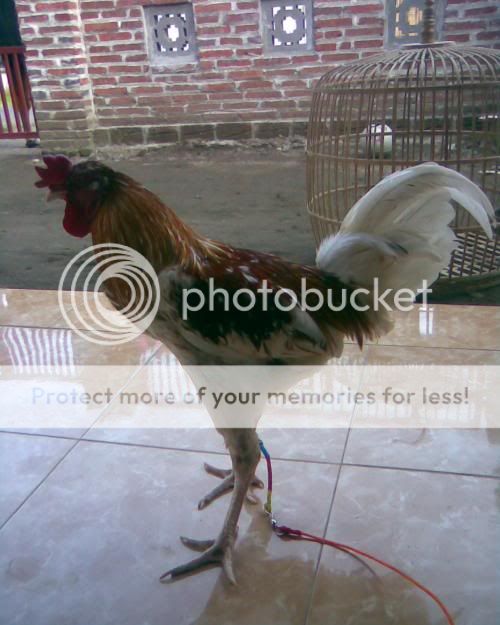
Ayam Ketawa Dijual (Bekisar X Austronesian).
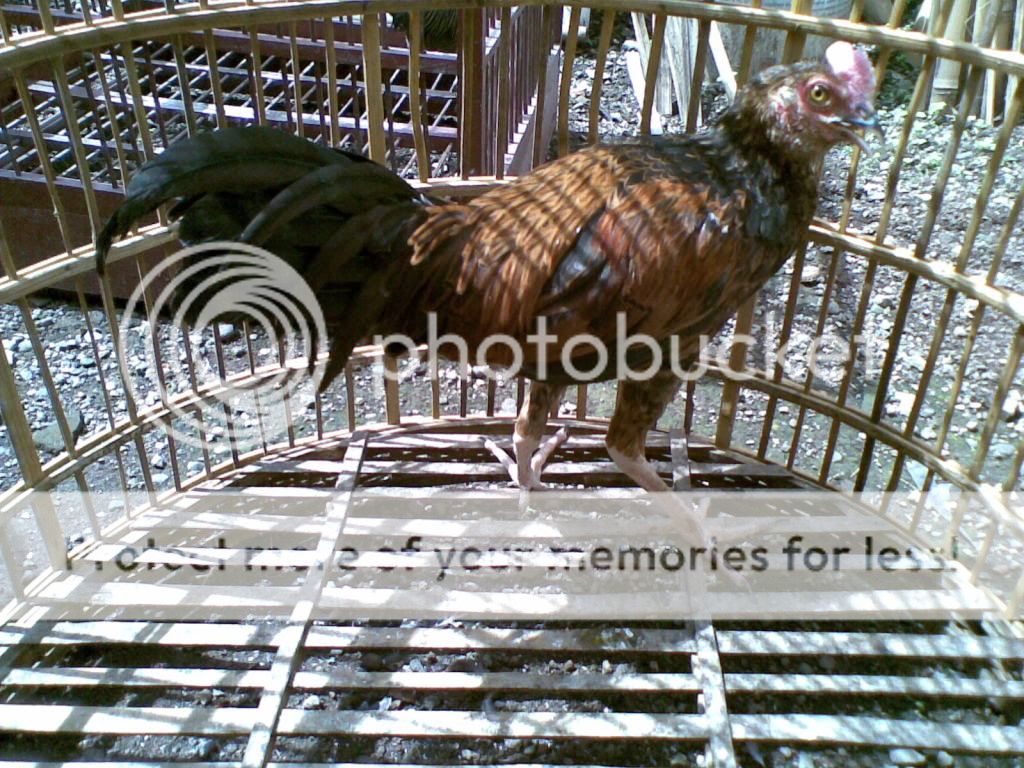
Ayam Bekisar Hutan (Bekisar X Wallikikilli X Austronesian)
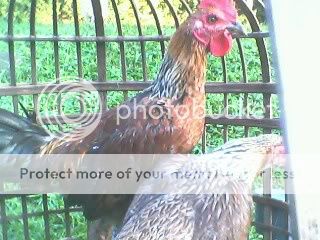
Ayam Ketawa Hutan (Wallikikilli Basket Bantams X Austronesian).

The composite of all three of the ancient original cultures is what we term as Polynesian. Nevertheless, because of the different strata, the different points in history in which the respective ancestral cultures arrived on these remote islands, we have livestock and plant cultivars, which can be linked directly with one or more of the respective founder cultures.
For example, the Austronesians carried at least one of the giant flightless junglefowl from Madagascar and or the Comoros to Saipan; to Tonga and Samoa.
They also carried the Basket Bantam from Sri Lanka to Marquesas.
The Micronesians carried Bekisar from their homelands in Indonesia all the way to Ponape and to Easter Island. They also carried the Bekisar with them to the Marquesas Islands. The Micronesians arrived in Marquesas long before the Austronesians who largely displaced them. Austronesian ethnocide/genocide against the Micronesian peoples may have obliged the Micronesians to move further out into the sea. This is likely how and why they ended up on Easter Island, which was not incidentally, inhabited by the Micronesians several centuries before the arrival of the Austronesians. The Micronesians introduced their uniquely Micronesian fowl to Easter Island. A topic which is often discussed is how successive waves of new migrants carried their own culturally/genetically distinctive fowl leading to the formation of well-defined breeds even on this most remote of populated islands in the world. This generation of different well-demarcated breeds and even races of fowl on Easter Island was a consequence of chickens being the only domestic animal on the island- the only land animal larger than a small lizard. Austronesians carried in their larger diversity of archaic chicken races- the naked neck giant; the two different Ketawa types and the Wallikikilli Basket Bantams not to mention the mainland form of the Red Junglefowl.
The Micronesians had probably only carried the Bekisar and the Indonesian Red Junglefowl. The Micronesians lived on an Easter Island (Rapa Nui) covered in lush temperate araucaria and tree fern forests. They hunted seals and dolphins by boat. They may even have had pigs and dogs. Their Micronesian fowl had probably reverted to the wild. Once the Austronesians arrived they quickly denuded the island of all tree cover. The peoples farmed similar crops and both became almost entirely dependent of chicken farming for protein.





Melanesian peoples



Photo removed for content

Micronesian peoples




Austronesian peoples
This issue of displacement and replacement is important for us to understand. When Micronesians arrived on an island with crops, pigs and fowl from Indonesia, they set up what amounted to be an Indonesian colony on an uninhabited land. ( Of course over the course of history, we can be sure the Micronesians displaced many Melanesian populations as well.) The pigs and fowl went wild and some sort of equilibrium was met ,eventually, with the Micronesians settling down to their normal way of life, fishing and farming in the jungles.
When Austronesians came, carrying their own respective food baskets from Malaysia and beyond, they displaced the Micronesians and overran all that the Micronesians had managed to establish.
The pigs the Austronesians carried with them were of a different species as were their fowl. There were also many more Austronesians arriving than there had ever been Micronesians. The Austronesians were able to outcompete the Micronesians on all fronts. Their pigs become the dominant genotype on the islands as did their fowl- at least temporarily because as time passed, the ecology and climate of these islands proved to be more formidable than perhaps the Austronesians were prepared for.
Whereas the Micronesians lived in small populations and survived on relatively little, the Austronesians had a larger footprint. They wiped out their ecosystems in no time.
Typhoons roll into these regions every few decades and the Austronesians were ill equipped to deal with the aftermath of these incredible storms. It is simply more difficult to find food and shelter for a larger population of people, especially after you've denuded the ecosystem entirely. These storms by the way are the defining ecological force of these islands. Like fierce snow storms and long winters define landscapes in some places in North America, the Typhoons are responsible for the shape that life takes on these islands. Every plant and animal must be adapted to survive these storms and thrive in their aftermaths. Those species that cannot, die off- they become extinct.
Many islands temporarily inhabited by successive waves of one culture or another were eventually abandoned due to these once in a century storms, often followed by war and destruction, slave raids between competing peoples and tribes. That left the pigs, dogs and fowl to fend for themselves. These animals were generally composites, descended of progenitors descended from founders that each peoples carried to that specific island. Selective advantages of the wild ancestors of some of these feral castaways would increase the survivability of a few populations. The genetics of those populations would eventually become dominant lineages until humans once again arrived carrying new animals with them. For example, feral pigs derived of wild Indonesian ancestors may have had better equipped teeth that enabled them to forage on specific roots and thus water on more arid islands. The feral pigs derived of wild Vietnamese ancestors, which inhabit much wetter jungle habitat than Indonesian wild pigs, may have lacked this adaptive trait. Those individuals (all or most of mixed ancestry) that lacked the special digging apparatus died out of thirst but their siblings exhibiting the trait survived.
This is just a theoretical example but I think you can appreciate the general point.




Polynesian peoples
Each of the three different seafaring groups contributed something of vital importance to the Polynesian culture.
The Melanesians contributed vitally important crops including taro, banana and yam. They also brought the dog and the Papuan pig.
Melanesians lived primarily on what they cultivated from wild and semi-domestic plants and animals from the forest.
The Micronesians contributed the first domesticated animals with "sea legs" including the Indonesian pig, and the Indonesian Junglefowl(s).
They also contributed crops including the breadfruit and coconut. Micronesians lived largely on what they fished out of the ocean.
Austronesians were more involved with selective breeding of their Vietnamese and Comoros Islands pigs and with their diverse chicken races.
They also propagated medicinal plants for example ginger and turmeric.
The Polynesians accrued the crops, livestock species and specialized breeds; the folklore, astronomical insight and technologies of all three preceding cultures.
I know there is a theory out there that the Micronesians are the babies with the Melanesian and Polynesian older. If we include the Marquesan Islanders as Micronesians, which we must because of their crops and livestock species, we acknowledge that the ancestors of the people of Easter Island, Hawaii perhaps even the Maori came from Marquesas.
This would make the Micronesians the oldest children on the Pacific.
Last edited by a moderator:



